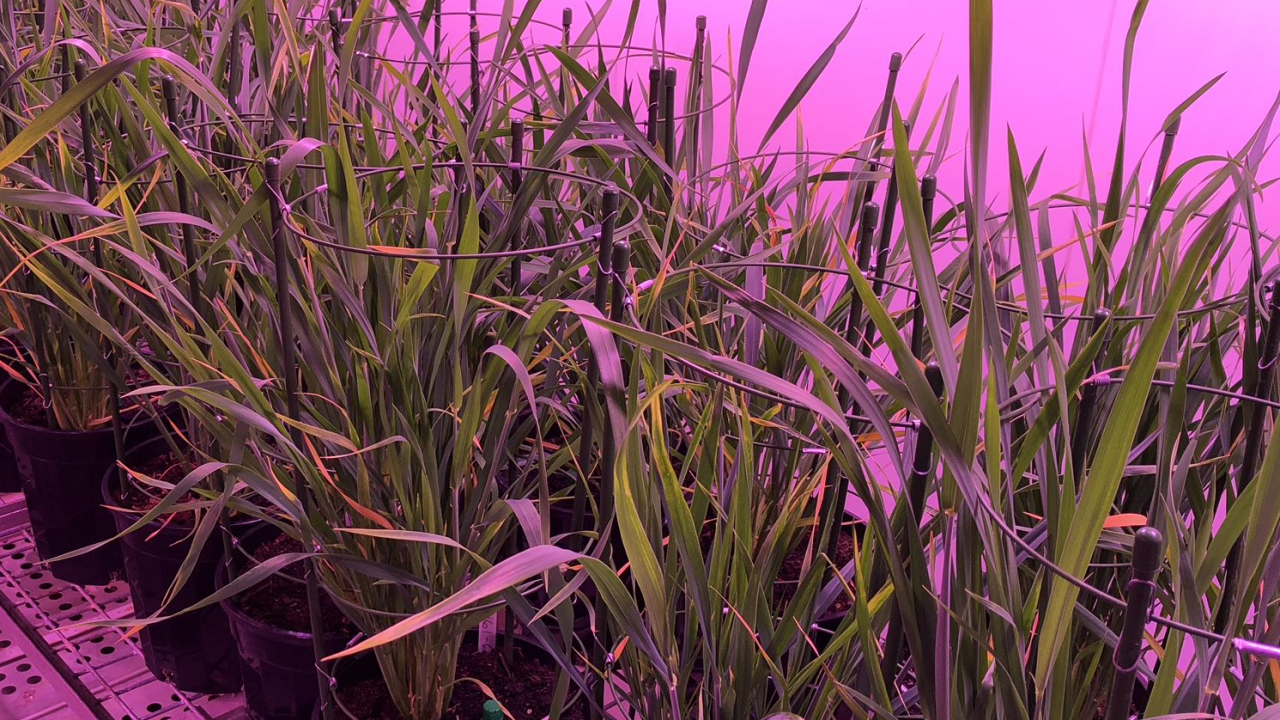
Wheat was grown in an office in Australia and monitored to learn more about differences between individual plants in rates of photosynthetic efficiency.
Speedier wheat could feed more people, research suggests
If wheat leaves could shift gears faster between moments of shade and light, plants could make more grain, increasing the capacity of a plot of ground to feed people.
Researchers are seeking the genes that control how quickly wheat leaves gear up when hit by flecks of sunlight. They are fueled by evidence of a stronger link between photosynthesis and crop yield than scientists have thought, said Assistant Professor Tom Buckley of the UC Davis Department of Plant Sciences.
Plants use sunlight to start chemical reactions that suck carbon dioxide from air and convert it into carbohydrate, the fuel that builds edible grains. The time spent shifting into photosynthesis could cost up to 15 percent of potential carbon uptake, Buckley and a team at the University of Sydney, Australia, estimated.
Furthermore, when sunflecks dapple their leaves, some wheat plants shift slower than others, according to a paper the scientists published in the Journal of Experimental Botany. Selective breeding to perk up slow-shifting plants could rev carbon intake up to 3.4 percent, they calculated.
It’s still unclear how faster-shifting photosynthesis could enlarge wheat yields, said Buckley, who led the research. In tobacco, greater sun-to-shade efficiency boosted plant productivity by a tantalizing 15 percent
Researchers world-wide also are trying to speed up photosynthesis in barley, rice, soybeans, cucumbers and other crops.
“We were doing the preliminary work for moving in that direction with wheat,” Buckley explained.
Faster-shifting wheat would complement other work increasing each plant’s number of grains and each grain’s size, said Distinguished Professor Jorge Dubcovsky, also in Plant Sciences, but not involved in Buckley’s research.
“We have found many genotypes are limited in the amount of carbohydrates they can provide to the extra or larger grains,” Dubcovsky said. That points to “the need to increase photosynthetic efficiency in wheat.”
